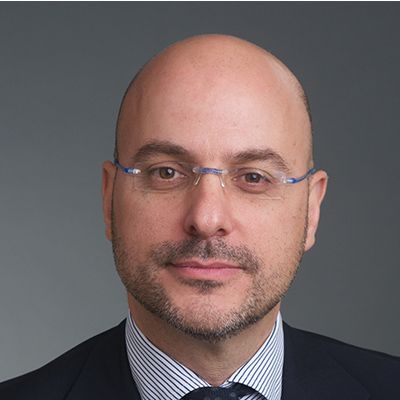Are your people falling through the cracks?
What happens when gaps in your employee benefits programmes become a matter of life and death?

A life-threatening cancer diagnosis is the stuff of nightmares.
The good news is that advances in medicine and technology bring a greater chance of survival than people just a generation ago could ever have hoped for.
But access to vital healthcare like cancer treatments remains a lottery, leaving far too many people around the world unable to access the medical intervention needed to save their life.
Multinationals do their best to protect their people with health insurance to bridge the gaps, giving their people the best chance of survival should they receive that dreaded diagnosis. But what if an employee is diagnosed with a life-threatening disease, only to find that they have don’t have the right coverage to get the treatment they need? This is exactly what happened to an employee at a leading multinational.
Rachael* had been working at telecommunications company Liberty Latin America (LLA) in the Caribbean for around 30 years when she received a life-changing cancer diagnosis.
To Rachael and her employer’s horror, they discovered her workplace health insurance did not cover her treatment at all. Exclusions in the local insurer’s policy meant the treatment Rachael needed wasn’t covered by her plan. Without access to treatment, and with her local public healthcare system unable to meet her needs, Rachael was in serious trouble.
She needed a bone marrow transplant, as well as chemotherapy and radiotherapy.
As LLA discovered, the treatment she needed was excluded by the local policy because the transplant was considered experimental and the treatment she required would need to be provided in another country. Also, her lifetime maximum cover had already been exhausted because of previous cancer treatments.
But LLA wasn’t prepared to give up.
They helped her to receive the treatment she needed, out of country. The company financially supported Rachael to travel to the United States and receive cutting-edge care conducted by top professionals there – at a cost of more than US $700,000.
In the wake of Rachael’s ordeal, LLA decided to put a plan into action to try to ensure no other employee would have to go through what she went through ever again.

What happened at LLA could happen at any multinational without the protections in place to prevent healthcare inequities.
The actions LLA took after Rachael’s case helped expose inadequacies across the company’s many medical programmes and so they knew what they were dealing with. Do you?
Dr Leena Johns, Chief Health & Wellness Officer at MAXIS GBN, recommends multinationals committed to equitable healthcare access put their table of benefits under the microscope and look for gaps, country by country.
“If it’s a market which has been identified as having insufficient critical care resources, or a market lacking in cutting-edge treatment options – is there something you can offer the employees in those countries so that they have a fighting chance at beating their disease?
“To have employees climb out from these cracks, it is first necessary to evaluate where these gaps exist, and then think about solutions.”
Find the gaps
LLA commissioned a thorough country-by-country review, to find out whether the coverage it was offering its people was comprehensive, and whether it met the company’s diversity, equity and inclusion (DE&I) values.
The table of benefits gap analysis made concerning findings, including that in some countries:
· local plans had insufficient lifetime maximums, such as some with cover of just $50,000
· life-saving treatments were excluded because they were outdatedly considered experimental
· treatments were excluded because the patient was required to seek it outside their home country
· cover for preventive screening was insufficient to even cover a blood test, despite particular diseases worth testing for, such as colon cancer, being prevalent in that country
· fertility treatments were excluded
· mental health cover, including psychiatric inpatient care or suicide attempts had cover exclusions
· donor’s costs for live organ transplant exclusions were not covered
· there was insufficient lifetime maximum cover for HIV drugs.
The healthcare lottery – why every multinational should be looking for the gaps
“Rachael’s harrowing story isn’t a one-off scenario that affects LLA alone. It’s a perfect example of what is happening all over the world, for almost every large employer. And they may not be aware of it until the worst happens” Dr Leena says.
Every month someone is not treated for cancer increases their risk of dying by 6-13%, according to research published in the British Medical Journal.1

Today, we live in an increasingly borderless working world. We can chat to our colleagues over video technology and swap information in seconds.
But barriers still exist for equitable healthcare access. Imagine two of your valued people who work for your company in the same role, but different locations. In today’s working world, they are probably hyper-connected – and they might ‘meet’ in virtual workplaces several times a week. But despite their mirrored roles, you could find one has life-saving, comprehensive cover while the other does not – simply because of where they live.
For example, there is a wide variation in how quickly different countries approve new medicines to fight cancer. And in many markets, there can be particularly long delays for the latest drugs and technology to be approved.
The disparity within Europe alone highlights the lottery employees at any multinational operating in numerous markets could face. A new cancer drug would take 341 days on average to reach Germany but take 1,129 days to reach neighbouring Poland.
Other parts of the world fare worse still. In Brazil, that waiting time stretches to 1,877 days.
There can also be a big lag in the time it takes to get therapies to markets where they are needed. For instance, according to Further Group, which provides end-to-end critical care insurance solutions, 70% of FDA-approved targeted cancer therapies were available in Denmark by 2022, compared to just 13% in Bulgaria.2

“The degree with which we are seeing growing gaps is becoming more and more obvious to both employees and to consumers. This has been an accelerated process – the COVID-19 pandemic has definitely played a large part – and that’s really put a lot of public healthcare systems under incredible pressure.
“Those consequences really haven’t gone away for many countries. We’re seeing these problems add to already existing, historical problems, like ageing populations and increasing healthcare utilisation.
“Today, we also see much more savvy consumers and employees, who are able to understand and research their condition. They see there are things out there that can make a substantial difference to the outcome of their illness.”
-Frank Ahedo, CEO, Further Group
Putting equity first
Rachael’s story is a lesson in the importance of equitable access to healthcare. LLA didn’t want its people to be left with different levels of access to care because of where they lived.
Like many companies today, DE&I values are top of mind at LLA, and their experience provided an opportunity to dig further into the detail of this. In one of their markets, the table of benefits review uncovered a local insurance policy riddled with inadequate clauses that didn’t meet their DE&I values. In another, the company found pregnancies were ineligible for cover if they were assisted – for instance, when babies were conceived with the help of an ovulation induction drug.
“All this stood in stark contradiction to LLA’s philosophy of being an inclusive company,” Dr Leena says.
Despite the review team’s best efforts, LLA still faces hurdles in the many markets it operates in. For instance, some of its people live in countries where same-sex partnerships are still illegal or they fall into a ‘grey area’ – where such partnerships are not illegal but a same-sex domestic partner is not recognised by the local insurer.

In our recent webinar discussing this subject, LLA’s Vanessa Borrero said the journey to fill the gaps can be tough, and is never-ending, but the company is determined to do everything it can to provide equitable healthcare, regardless of location.
“I think the most important decision companies need to make in this journey is just to be brave, to be willing to raise awareness around these issues and to have these conversations no matter how painful or embarrassing it is. That’s the best start.”
Where you live, shouldn’t determine if you live
We could all learn from what Rachael and LLA went through.
Here are some key questions for multinationals concerned about whether their people could fall through the cracks.
· Does where they live affect the employee benefits available to your people?
· Do those benefits respond to local population health markers or risk factors?
· Does every market you operate in have the same level of public health system accessibility?
· Does every local insurer you partner with include mental health cover?
· Could your people be missing out on access to potentially life-saving drugs because of delays accessing new treatments and technologies where they live?
· Could you have missed an inadequacy in the fine print, such as inadequate annual and lifetime cover maximums?
· Do your local insurance partners’ exclusions clash with your DE&I values?
· Are your employee benefits programmes fit for today’s world? Do they cater for people in various life stages?
Rachael’s story is one we could all learn from. To hear more about how LLA responded to her case, watch our webinar video.
Like this piece? Read our other related stories...

Is being sedentary more dangerous than smoking?
Looking after your people by encouraging a more active lifestyle.

Are captives the key to creating an equitable EB offering?
This Pride month, we looked in-depth at how captives can enable a fairer workplace.

[1] Hanna, T., et al. British Medical Journal. November 2020. Mortality due to cancer treatment delay: systematic review and meta-analysis
https://www.bmj.com/content/371/bmj.m4087 (Sourced: September 2023)
[2] Anon. Further proprietary data as of December 2022 (EFPIA / JAMA Network) (Sourced: September 2023)
[*] Name changed to protect privacy.
This document has been prepared by MAXIS GBN and is for informational purposes only – it does not constitute advice. MAXIS GBN has made every effort to ensure that the information contained in this document has been obtained from reliable sources but cannot guarantee accuracy or completeness. The information contained in this document may be subject to change at any time without notice. Any reliance you place on this information is therefore strictly at your own risk.
The MAXIS Global Benefits Network (“Network”) is a network of locally licensed MAXIS member insurance companies (“Members”) founded by AXA France Vie, Paris, France (“AXA”) and Metropolitan Life Insurance Company, New York, NY (“MLIC”). MAXIS GBN, a Private Limited Company with a share capital of €4,650,000, registered with ORIAS under number 16000513, and with its registered office at 313, Terrasses de l’Arche – 92727 Nanterre Cedex, France, is an insurance and reinsurance intermediary that promotes the Network. MAXIS GBN is jointly owned by affiliates of AXA and MLIC and does not issue policies or provide insurance; such activities are carried out by the Members. MAXIS GBN operates in the UK through its UK establishment with its registered address at 1st Floor, The Monument Building, 11 Monument Street, London EC3R 8AF, Establishment Number BR018216 and in other European countries on a services basis. MAXIS GBN operates in the U.S. through MAXIS Insurance Brokerage Services, Inc., with its registered office located at c/o Katten Muchin Rosenman LLP, 50 Rockefeller Plaza, New York, NY, 10020-1605, a NY licensed insurance broker. MLIC is the only Member licensed to transact insurance business in NY. The other Members are not licensed or authorised to do business in NY and the policies and contracts they issue have not been approved by the NY Superintendent of Financial Services, are not protected by the NY state guaranty fund, and are not subject to all of the laws of NY. MAR01286/0923

